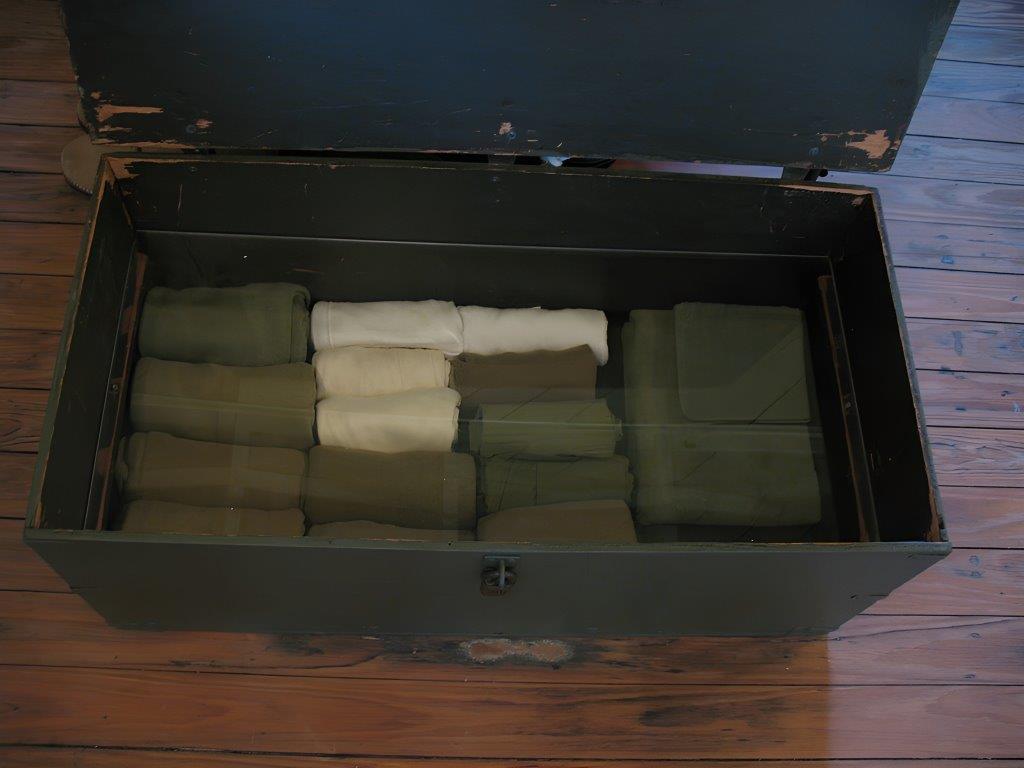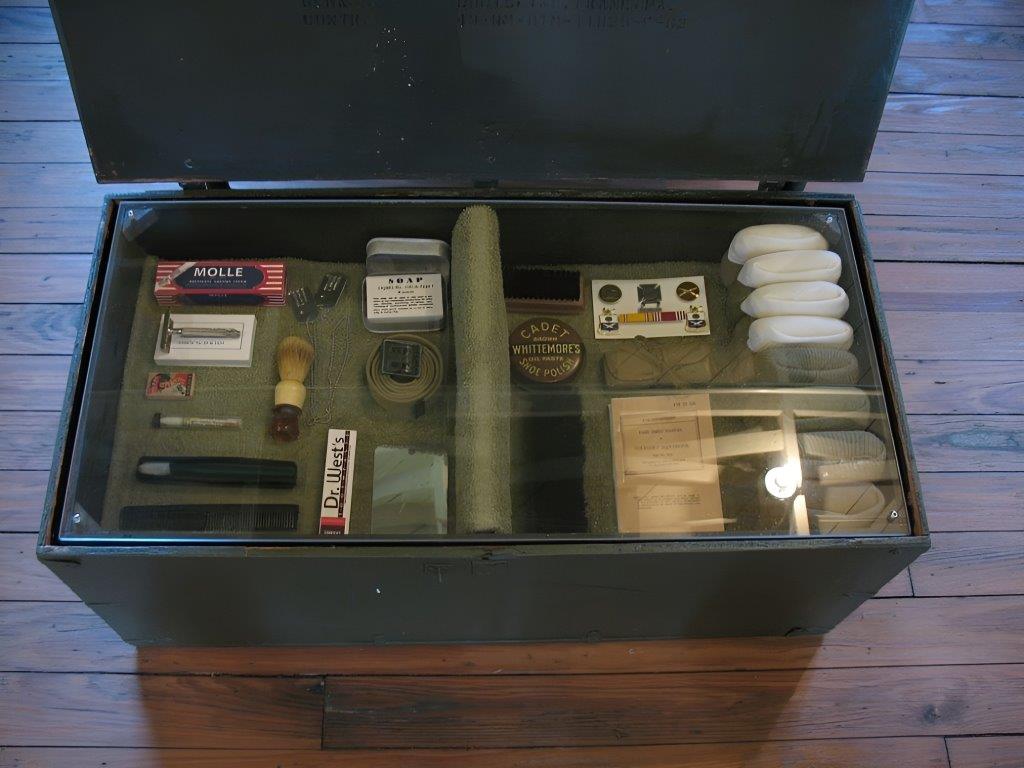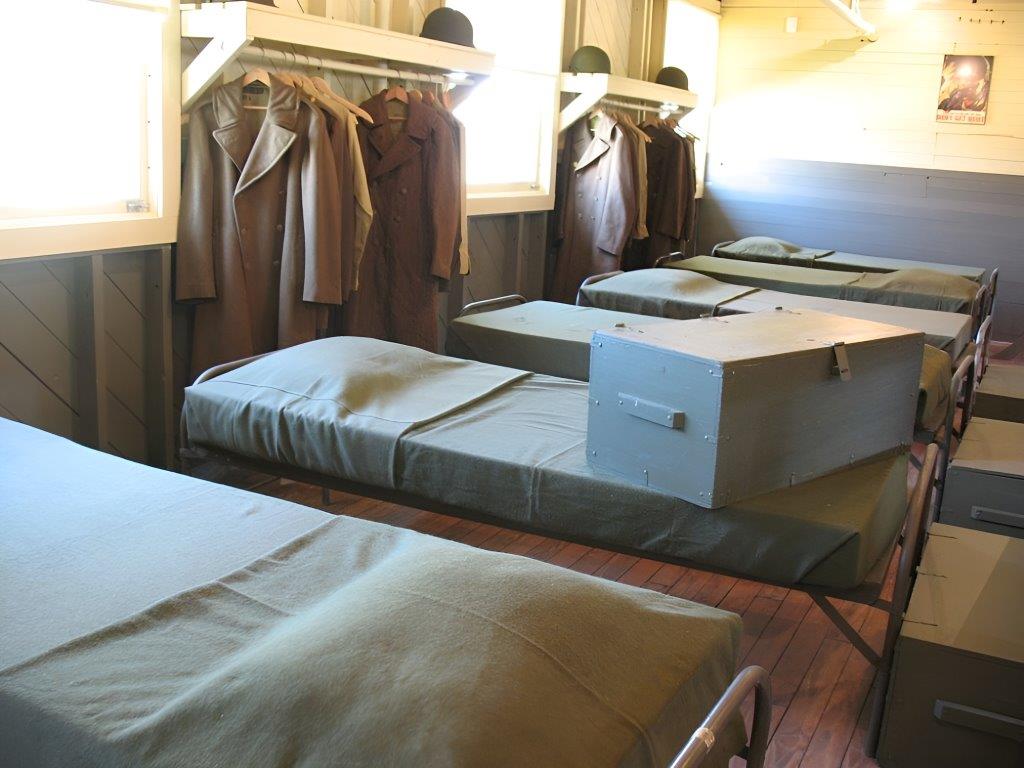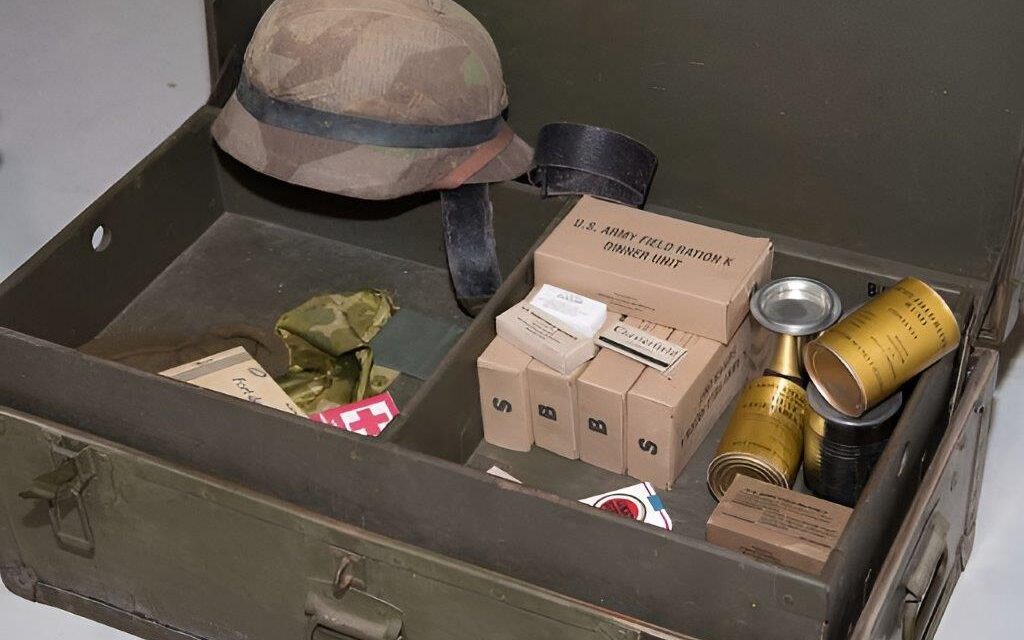For individuals with a passion for military relics and history, dating a military foot locker can be a once-in-a-lifetime opportunity. These footlockers made in the USA aren't just a regular lid and crate. Collectors and hobbyists alike have shown great interest in these containers, which were previously used to transport and store the goods of servicemen and women. Dating a military foot locker, however, calls for close scrutiny of detail and familiarity with their background and marks.
Accurately dating military items requires familiarity with foot lockers. These chests and trunks were made of wood or metal and were used by the military to transport and store the goods of soldiers and sailors. The name, rank, and serial number of the owner, as well as the unit to which the item belonged, were frequently engraved on them. The age and legitimacy of the foot locker depend on correctly identifying and interpreting these indicators.
Knowing how to date a military foot locker can be quite a journey. Military foot lockers can range in price from very cheap to very expensive, depending on their vintage, rarity and condition. Refinishing or repainting a foot locker can dramatically reduce its worth, so it's best to avoid doing so unless absolutely essential. Collectors and fans can properly date and preserve these key artifacts of military history if they adhere to these criteria.
Key Takeaways
- Knowing the background and markings of military foot lockers is crucial for determining their age.
- The authenticity and worth of a foot locker can be greatly impacted by how well you evaluate its condition.
- Unless absolutely required, restoration methods should be avoided.
Understanding Military Foot Lockers
Foot lockers are a common sort of military storage container for keeping clothing and other personal effects safe while on duty. These storage compartments are built to last under the stresses of military use. They come with padlockable hasps and are normally crafted from wood or metal.
The main compartment of a military foot locker is normally accessed by removing a tray. Socks, underwear, and other tiny personal items can all find a home on the tray. Clothing, footwear, and other personal goods can all fit in the main storage compartment.
The vast majority of military units still use traditional wooden foot lockers. They are durable and well-suited to the rigors of a military lifestyle. However, they are often bulky and awkward to move around. Metal foot lockers are lighter and more long-lasting than their wooden counterparts.
A military foot locker's hasps are a crucial component. They provide soldiers with a way to lock up their things and prevent theft. Padlocks for use with the foot lockers are standard issue for soldiers. If you don't want to lose the key to your padlock, store it somewhere secure.
Foot lockers are a standard fixture in military quarters. When a soldier first reports to his or her unit, he or she will likely be given a foot locker. The foot locker is located at the foot of the bed and is used to store the soldier's personal items.

The bottom line is that service members who value the safety of their goods should familiarize themselves with military foot lockers. Both wooden and metal foot lockers have their uses and benefits. To prevent theft of personal items, troops can lock their foot lockers with hasps.
Identifying Age and Markings: Beginning the Date

Dating a Military Foot Locker
Due to their identical appearance and the lack of any standard marks or codes, military foot lockers can be difficult to date without a guide. A military foot locker's age can be estimated with some effort, though.
Pro Tip: Check out the footlocker's build quality first. Wooden foot lockers were common during World War II, whereas metal ones became more common afterwards. In addition, foot lockers built before and during the war typically used dovetail joints, while post-war lockers were more likely to feature machine-cut joints.
The hardware of a US military foot locker can also be used as a method of dating. Hardware on footlockers produced before and during WW2 era was often made of brass, whereas postwar production typically used steel or aluminum.
Deciphering Markings
Markings on military foot lockers typically reveal their age and place of origin. Unit markings, dates, and serial numbers are all examples of acceptable markings to use.
Seeing the foot locker's unit marks will assist pinpoint whose unit it belonged to. The name, number, or emblem of the unit may be included in these markers. Dates can also be used to determine how old a foot locker is. Labels, stencils, and stamps on the foot locker's wood or metal all provide dates.
Pro Tip: The age and origin of an old military foot locker can be determined by its serial number. Metal tags or stamps in the wood will have these identifiers.
Note that not all shoe cubbies will have markings, and that those that do may be illegible. Also, since markings can be added or removed, it's necessary to look at the foot locker as a whole if you want to know how old it is and where it came from.
Finding the era and origin of a military foot locker can be difficult, but clues can be gleaned from its construction, hardware, and markings.
Info on Assessing Condition
Assessing the condition of a military foot locker is a crucial step in determining its age. It aids in estimating the locker's age, genuineness, and general worth. Some indicators of a well-maintained military foot locker are:
Exterior Condition: There shouldn't be any noticeable dings, scrapes, or rust on the locker's outside. If the outside is damaged, it could be because of hard handling or poor storage conditions. Also, look for any traces of welding or patching, as these reduce the locker's resale value.
Hardware Condition: The locker's handles, latches, and hinges, among other hardware, should all be in good functioning order. Rust and corrosion can impair the locker's performance, therefore inspecting it is a good idea.
Interior Condition: Condition Inside Locker Areas: All areas inside the locker should be neat and odor-free. Water damage and mold growth are indicators of improper storage. Look for evidence of delamination, which occurs when the wood's layers start to come apart.
Authenticity: The authenticity of a military foot locker can be determined by examining for specific markings or labeling. Check for official military markings such as stamps or unit insignia to verify its legitimacy.
An essential part of establishing a military foot locker's worth and legitimacy is evaluating its current state of preservation. Paying close attention to the foot locker's appearance, hardware, interior, and authenticity can help you determine its age.
Restoration Process: The Definitive Article
Restoring a military foot locker is a satisfying project that gives a historical artifact fresh purpose. The process of restoration, whether for personal use or to sale, may be enjoyable and rewarding.
The first order of business in the repair process is to give the foot locker a good scrub down. Cleaning means getting rid of any grime, rust, or dirt that has built up through time. Sanding the surface of wooden foot lockers can get rid of defects and get the wood ready for staining or painting. The refurbishment process can get underway once the foot locker has been cleaned.
Pro Tip: Applying a rust converter to metal foot lockers before painting will stop further rusting and make the surface easier to work with. Applying a wood conditioner before staining or painting wooden foot lockers can help preserve the wood and make it easier to work with.
After cleaning and sanding, the foot locker is ready to be finished in paint or stain. Spray paint or enamel paint can be used to provide a uniform and smooth surface on metal foot lockers. Wood stain or paint can be used to change the color or finish of wooden shoe cubbies.
Putting in new hardware is often the final step in fixing something. Changes like new knobs, hinges, and locks are possible. When restoring a foot locker, it's crucial that the hardware be the right size and style for the locker.
Military foot locker restoration entails cleaning, sanding, prepping, painting or staining, and installing new hardware. Anyone can bring a foot locker back to life with the correct equipment and supplies.
Footlockers Importance in Military Life
Storage areas for shoes have been standard issue for troops for many years. Trunks like these have been indispensable for transporting and storing troops' gear, uniforms, and personal things. Veterans and members of the National Guard also benefit greatly from having access to military foot lockers.
The foot locker is a hardy trunk locker, ideal for use in the demanding environment of the military. Its purpose is to prevent the contents from being broken into or stolen while in transit. These lockers provide a convenient and secure place for soldiers to keep their uniforms, gear, and personal effects. Having easy access to one's equipment is crucial, especially for troops on the go.
The foot locker is a sign of military service and discipline. A soldier's uniform is a visible symbol of their patriotism and determination to serve their country. It's a physical manifestation of the price paid daily by troops to ensure the safety of their country and its people.

In addition to their aesthetic value, military foot lockers serve an important function. They aid service members in keeping up with their regular lives while away from home. Soldiers can make their foot lockers feel more like home by adding pictures of loved ones, stickers, and other mementos. When morale is high, long deployments are less stressful.
In the grand scheme of things, military foot lockers are rather important. They offer a reliable and secure method of transporting and storing essential items including uniforms, tools, and personal effects. They represent the soldier's loyalty to their country and help him or her feel at home away from home.
Frequently Asked Questions
What are the dimensions of a military foot locker?
The standard specifications for military foot lockers are 32 inches in length, 16 inches in breadth, and 13 inches in height, though these measurements can vary. Some shoe cubbies may be larger or smaller than others, though.
What are military footlockers made of?
Foot lockers in the military are often built of metal or wood. The plywood or solid wood used in the construction of the foot lockers is reinforced at the edges and corners with metal for added durability. To avoid rust and corrosion, the metal foot lockers are typically painted with a protective coating.
What is the size of an Army footlocker?
Standard measurements for a footlocker issued by the United States Army are 32 by 16 by 13 inches in size. Size, however, might change based on the design and function of the individual footlocker.
What is the origin of the word footlocker?
The term "footlocker" refers to a trunk or box that was commonly used to keep one's things in the 19th century. To emphasize that the trunk was manageable in size for foot soldiers, the preposition "foot" was tacked on.
What is a footlock?
When locking a footlocker or comparable storage container, a padlock known as a "footlock" is used. The lock can only be opened with the correct key or combination, making it a reliable means of securing valuables.
What is a WW2 Navy footlocker?
During World War II, sailors in the United States Navy utilized a special form of footlocker known as a WW2 Navy footlocker. Usually constructed from wood, these footlockers were intended to keep uniforms, footwear, and other items safe and secure. For easy identification, sailors' names and ranks were frequently painted on them.











